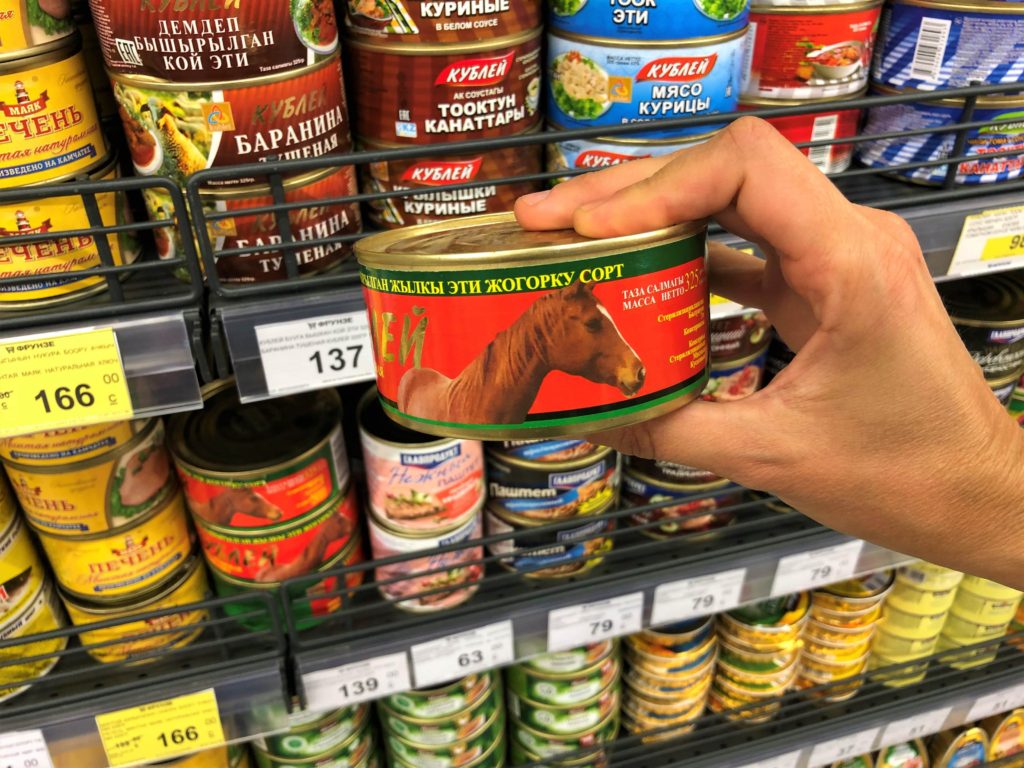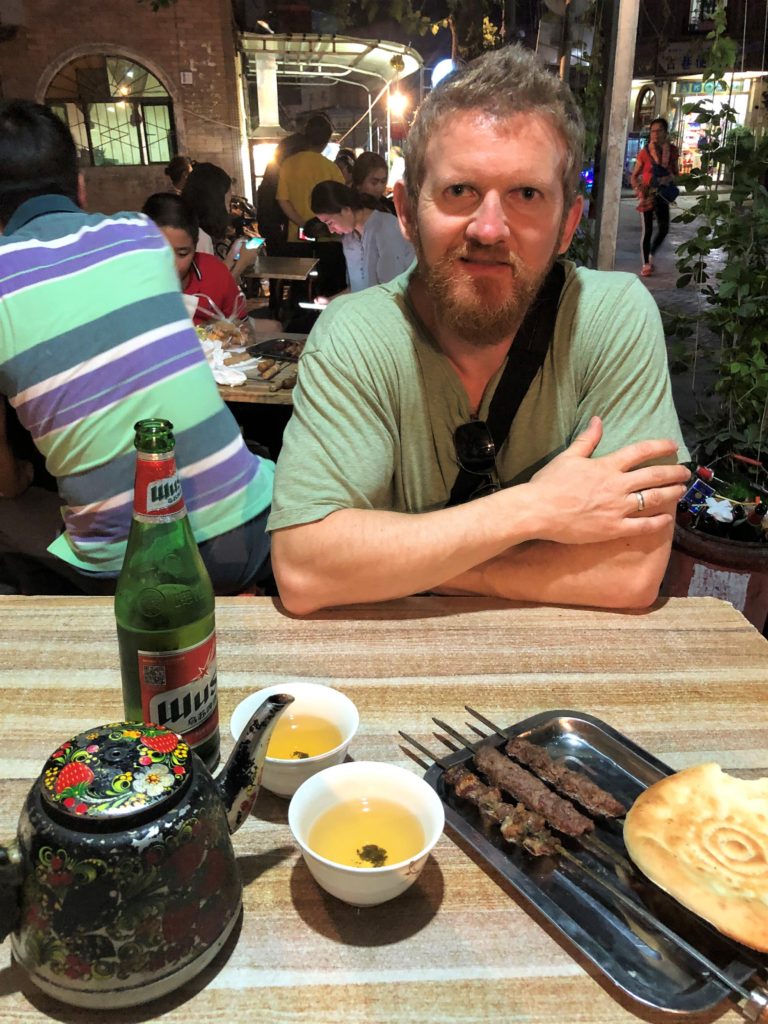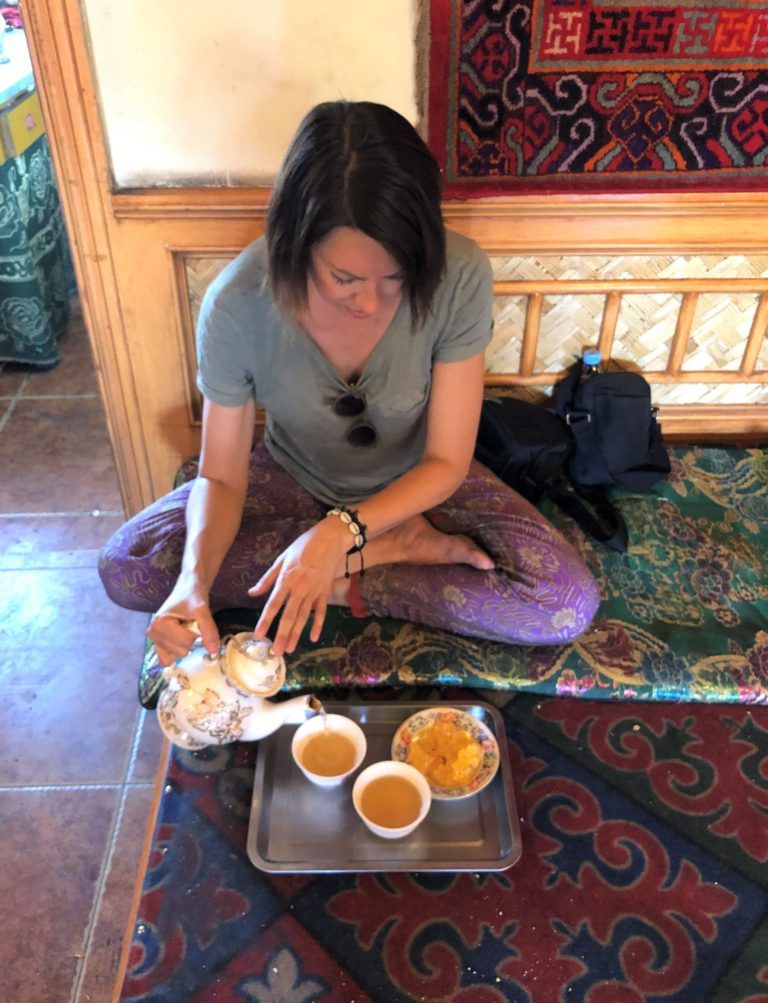In yet another of our overlanding adventures we travelled from Kyrgyzstan to India on public transport. The first border-crossing of the trip was from Osh (Kyrgyzstan) to Kashgar (China).
There are two crossings between Kyrgyzstan and China: Torugart, near Naryn; and Irkeshtam, near Osh/Sary Tash. Both bring you into China near Kashgar. This post is about the crossing we used, Irkeshtam. If you ever wondered how to get from Kyrgyzstan to China, then read on.
Before You Go
The border is open year round but closed on weekends and holidays. You need to get your Chinese visa in advance. It’s a good idea to have some RMB (Chinese currency). You can change USD, Som and RMB on the Chinese side but not on the Kyrgyz side.
You’ll be crossing into the Xinjiang Autonomous Region of China. This is a ‘sensitive area’ thanks to Chinese policies relating to the Uyghur people who live there, and so there will be a lot of time-consuming checkpoints, searches and questioning on the Chinese side. Do not mention Xinjiang in your itinerary when you apply for your Chinese visa, or your application will probably be denied.
Important – Time Your Crossing
The Kyrgyz side of the border is open from 09.00 – 11.00 and again from 14.00 – 18.00 (Kyrgyz time).
The Chinese side operates on Beijing time. So factor in the time difference when you plan your transport to make sure that you arrive either in good time before the lunch break, or immediately after it. This is the schedule we saw posted in July 2019:
Summer
10.00 – 13.30
16.30 – 20.00
Winter
10.30 – 14.00
16.00 – 19.30
Beijing time is two hours ahead of Kyrgyzstan. So let’s say you’re crossing in summer: you want to be through the Kyrgyz formalities and at the gates well before 11.30 in Kyrgyzstan (13.30 Beijing time) to get to the first major checkpoint and avoid waiting through the lunch break.
Bring snacks, water, and weather-appropriate clothing because if you do end up stuck outside the gates, you have to wait on a barren, rocky hillside with no cover until the Chinese side opens again.

The Route
You can get from Osh (Kyrgyzstan) all the way to Kashgar (China) in one very long day. It took us 15 hours including the border crossing itself and a lot of checkpoints. If you time your arrival at the border on the Kyrgyz side better than we did (which is why I’m writing this post), you can save yourself several hours.
If you’re coming from Osh and don’t want to do it in one day, stop in Sary Tash or Sary Mogol (Kyrgyzstan) for a night.
Osh to Sary Tash to the Irkeshtam Border
You can take a marshrutka or a share-taxi from the Old Bus Station in Osh to Sary Tash and then hitchhike or taxi to the border from there. This costs just a few hundred Som. It also takes longer and shared transport doesn’t tend to fill up and leave early enough. The marshrutka doesn’t leave until 2 in the afternoon which is a guarantee you’ll be spending the night in Kyrgyzstan.
To be sure of getting through in one day we took a private taxi straight from the bus station in Osh to the border. Since no one else was there and we were at the drivers’ collective mercy, it cost 4500 Som. It took a little less than 4 hours, including a checkpoint around 20 kms from the border where soldiers checked our passports. We left Osh at 07.15 and arrived at the Kyrgyz side of the border by 11.00.
The departure formalities are just a quick bag check and the passport stamp, and then you walk about 2 km past a long line of parked trucks. You can take a taxi (I think it might actually just be a Kyrgyz officer who gives you a lift). When you reach the first checkpoint for the Chinese side a guard in a booth will just look at your passport and wave you past. Walk around 400 meters more up the hill, and you’ll reach the big gates. Do not feel elated, or even cautiously optimistic, thinking it will be quick and easy based on the first checkpoint.
Crossing the Border
Note: We arrived at the gates at 11.40 Kyrgyz time. However, it was 13.40 in Beijing and the border had just closed 10 minutes earlier for the lunch break. So we had to wait until 14.30 Kyrgyz time (16.30 Beijing time) when they finally re-opened. Try your damnedest to avoid this.
Once you’re inside the gate there is a pretty quick passport check in the booth outside the main building. Then you’ll carry on to the first major checkpoint. Apparently if a truck is going you can ride with that; otherwise you’ll have to get on a shuttle taxi when one arrives. It costs 100 RMB per person (for the entire journey to Uluqat, the ‘new border’ – the shuttle is mandatory after step 1 below so you’ll be in it sooner or later). The driver will keep your passport the whole time, other than when you are inside a checkpoint.
In our experience, actually crossing the border took 3 steps:
- Ride the shuttle a few minutes up the road to the ‘old border’ where you get out and go inside the building with all your gear. Show your documents and they’ll search you and your stuff. They will make you open all your devices so they can scroll through everything. They probably will plug a device into your phone to browse your content and possibly install a surveillance app. They unpacked every item in our bags, checked our books, did a body scan, and so on. This can take a really long time.
Incidentally there was a sign here wishing us a ‘worm welcome’ and that was the highlight of the day for so many reasons. - Get back in the shuttle and ride about 140 km to the ‘new border’ at Uluquat. On the way there’s a checkpoint where you get out to show your passport. You and your passport will be photographed and there’s another bag check xray. We also got some vague questioning in Chinese, which we could not answer.
Get back into the same shuttle with the same long-suffering passengers. - Arrive at immigration at Uluqat. Our driver lost track of one of the shuttle passengers and had to go find him running around stamp-less, so we all had to wait in the parking lot. Because of that, and since the previous checks had taken so long, immigration had shut again (it was now past 20.00 Beijing time). We had to wait some more for the guards come back to let us in anyway. Here, you show your passport again, undergo another bag search, another device check, and more questioning which they might record.
Finally, you queue up for fingerprinting, photos, get your passport stamped and xray your bag one last time (for the moment). Just like a normal border. Sort of.
In our case, all of this took a total of about 6 hours. Maybe we just met a lot of overzealous guards, but it was exhausting.
Bonus step: Get back into the shuttle one more time, and drive 300 metres to a small building in the immigration car park. We spent another 20 minutes there, while more guards scrutinised our passports and radioed back to the guards inside as if we’d appeared from nowhere instead of from the building next door.
From the Border to Kashgar
Despite the late hour (it was 23.00 Beijing time) there was a taxi waiting in the car park outside immigration. It cost us 40 RMB per person from Uluqat to Kashgar. Otherwise you can go to the bus station nearby and organise a share-taxi there, which should be cheaper. No matter how tired you are, do not get comfortable: it’s just a few kilometers to the next checkpoint where you unload your backpacks into the xray, and get your face and passport scanned and photographed.
About an hour brings you to the outskirts of Kashgar where the driver will drop you. It’s easy to flag a cab to the centre. They run on the metre. We arrived in the city after midnight and walked to the Old Town Hostel, which I wouldn’t recommend. It’s a dump. Kashgar Pamir Youth Hostel is much better and we moved to it in the morning.
Well done you. Welcome to China! They say getting there is half the fun, but in this case…it’s really not.


Read More
For more about travelling in Kyrgyzstan and things to see and do, check out my guide to a month in the ‘Stans and my other posts about Kyrgyzstan.
I also wrote a story about our experience crossing the border and our days in Kashgar:
A Tale of Two Borders: China to Pakistan via Xinjiang
And, if you want to get out of Xinjiang, check out my guide to crossing the China-Pakistan border.




This Post Has 4 Comments
Awesome trips! Do you know whether the crossing is still open during the pandemic?
Thanks! I don’t know if it’s open but you’d definitely want to check that before setting off:) I guess it depends on any current restrictions in both countries? If/when you go – have fun!!
my husband is chineses background with canadian passport, I wonder if he’ll get pass the border by land ?
I’d assume so, as long as he has the correct visa?